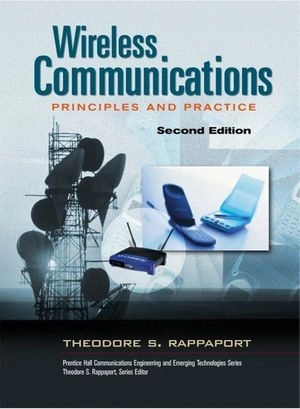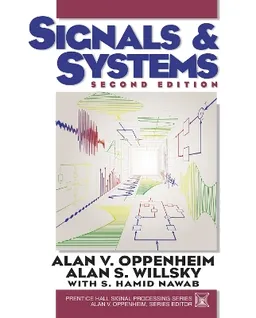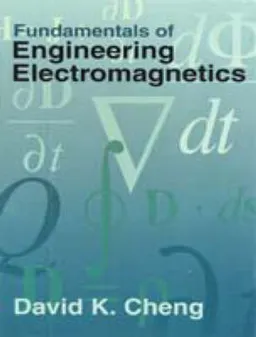Preface.
1. Introduction to Wireless Communication Systems.
Evolution of Mobile Radio Communications. Mobile Radiotelephony in the U.S. Mobile Radio Systems Around the World. Examples of Wireless Communication Systems. Trends in Cellular Radio and Personal Communications. Problems.
2. Modern Wireless Communication Systems.
Second Generation (2G) Cellular Networks. Third Generation (3G) Wireless Networks. Wireless Local Loop (WLL) and LMDS. Wireless Local Area Networks (WLANs). Bluetooth and Personal Area Networks (PANs). Summary. Problems.
3. The Cellular ConceptÑSystem Design Fundamentals.
Introduction. Frequency Reuse. Channel Assignment Strategies. Handoff Strategies. Interference and System Capacity. Trunking and Grade of Service. Improving Coverage & Capacity in Cellular Systems. Summary. Problems.
4. Mobile Radio Propagation: Large-Scale Path Loss.
Introduction to Radio Wave Propagation. Free Space Propagation Model. Relating Power to Electric Field. The Three Basic Propagation Mechanisms. Reflection. Ground Reflection (Two-Ray) Model. Diffraction. Scattering. Practical Link Budget Design Using Path Loss Models. Outdoor Propagation Models. Indoor Propagation Models. Signal Penetration into Buildings. Ray Tracing and Site Specific Modeling. Problems.
5. Mobile Radio Propagation: Small-Scale Fading and Multipath.
Small-Scale Multipath Propagation. Impulse Response Model of a Multipath Channel. Small-Scale Multipath Measurements. Parameters of Mobile Multipath Channels. Types of Small-Scale Fading. Rayleigh and Ricean Distributions. Statistical Models for Multipath Fading Channels. Theory of Multipath Shape Factors for Small-Scale Fading Wireless Channels. Summary. Problems.
6. Modulation Techniques for Mobile Radio.
Frequency Modulation vs. Amplitude Modulation. Amplitude Modulation. Angle Modulation. Digital Modulation: An Overview. Line Coding. Pulse Shaping Techniques. Geometric Representation of Modulation Signals. Linear Modulation Techniques. Constant Envelope Modulation. Combined Linear and Constant Envelope Modulation Techniques. Spread Spectrum Modulation Techniques. Modulation Performance in Fading and Multipath Channels. Problems.
7. Equalization, Diversity, and Channel Coding.
Introduction. Fundamentals of Equalization. Training A Generic Adaptive Equalizer. Equalizers in a Communications Receiver. Survey of Equalization Techniques. Linear Equalizers. Nonlinear Equalization. Algorithms for Adaptive Equalization. Fractionally Spaced Equalizers. Diversity Techniques. RAKE Receiver. Interleaving. Fundamentals of Channel Coding. Block Codes and Finite Fields. Convolutional Codes. Coding Gain. Trellis Coded Modulation. Turbo Codes. Problems.
8. Speech Coding.
Introduction. Characteristics of Speech Signals. Quantization Techniques. Adaptive Differential Pulse Code Modulation (ADPCM). Frequency Domain Coding of Speech. Vocoders. Linear Predictive Coders. Choosing Speech Codecs for Mobile Communications. The GSM Codec. The USDC Codec. Performance Evaluation of Speech Coders. Problems.
9. Multiple Access Techniques for Wireless Communications.
Introduction. Frequency Division Multiple Access (FDMA). Time Division Multiple Access (TDMA). Spread Spectrum Multiple Access. Space Division Multiple Access (SDMA). Packet Radio. Capacity of Cellular Systems. Problems.
10. Wireless Networking.
Introduction to Wireless Networks. Differences Between Wireless and Fixed Telephone Networks. Development of Wireless Networks. Fixed Network Transmission Hierarchy. Traffic Routing in Wireless Networks. Wireless Data Services. Common Channel Signaling (CCS). Integrated Services Digital Network (ISDN). Signaling System No. 7 (SS7). An Example of SS7 Ñ Global Cellular Network Interoperability. Personal Communication Services/Networks (PCS/PCNs). Protocols for Network Access. Network Databases. Universal Mobile Telecommunication System (UMTS). Summary.
11. Wireless Systems and Standards.
AMPS and ETACS. United States Digital Cellular (IS-54 and IS-136). Global System for Mobile (GSM). CDMA Digital Cellular Standard (IS-95). CT2 Standard for Cordless Telephones. Digital European Cordless Telephone (DECT). PACS Ñ Personal Access Communication Systems. Pacific Digital Cellular (PDC). Personal Handyphone System (PHS). US PCS and ISM Bands. US Wireless Cable Television. Summary of Standards Throughout the World. Problems.
Appendix A. Trunking Theory.
Erlang B. Erlang C.
Appendix B. Noise Figure Calculations for Link Budgets.
Appendix C. Rate Variance Relationships for Shape Factor Theory.
Rate Variance for Complex Voltage. Rate Variance for Power. Rate Variance for Envelope.
Appendix D. Approximate Spatial Autocovariance Function for Shape Factor Theory.
Appendix E. Gaussian Approximations for Spread Spectrum CDMA.
The Gaussian Approximation. The Improved Gaussian Approximation (IGA). A Simplified Expression for the Improved Gaussian Approximation (SEIGA).
Appendix F. Q, erf & erfc Functions.
The Q-Function. The erf and erfc Functions.
Appendix G. Mathematical Tables, Functions, and Transforms.
Appendix H. Abbreviations and Acronyms.
Appendix I. References.
Index.
Åtkomstkoder och digitalt tilläggsmaterial garanteras inte med begagnade böcker




















